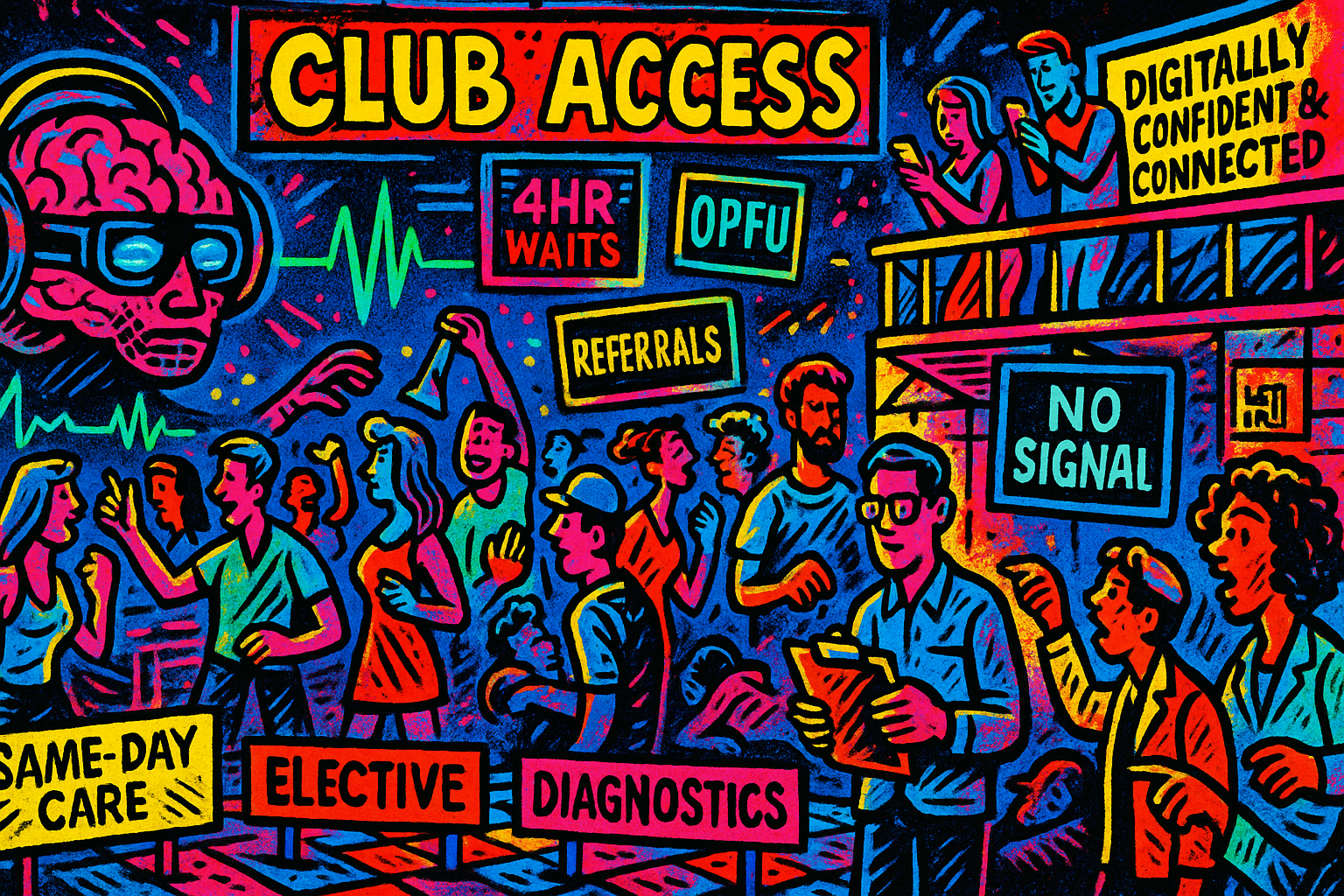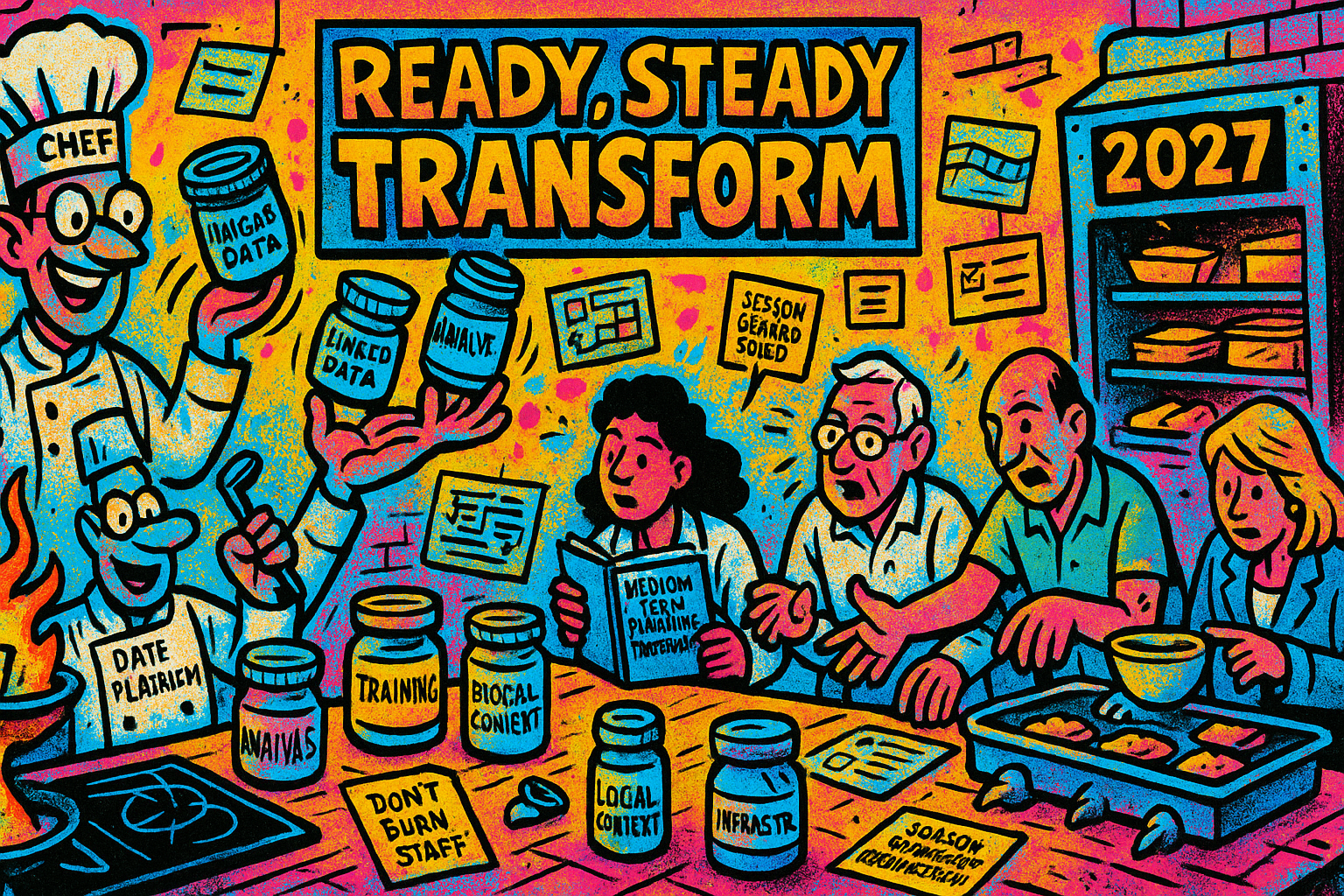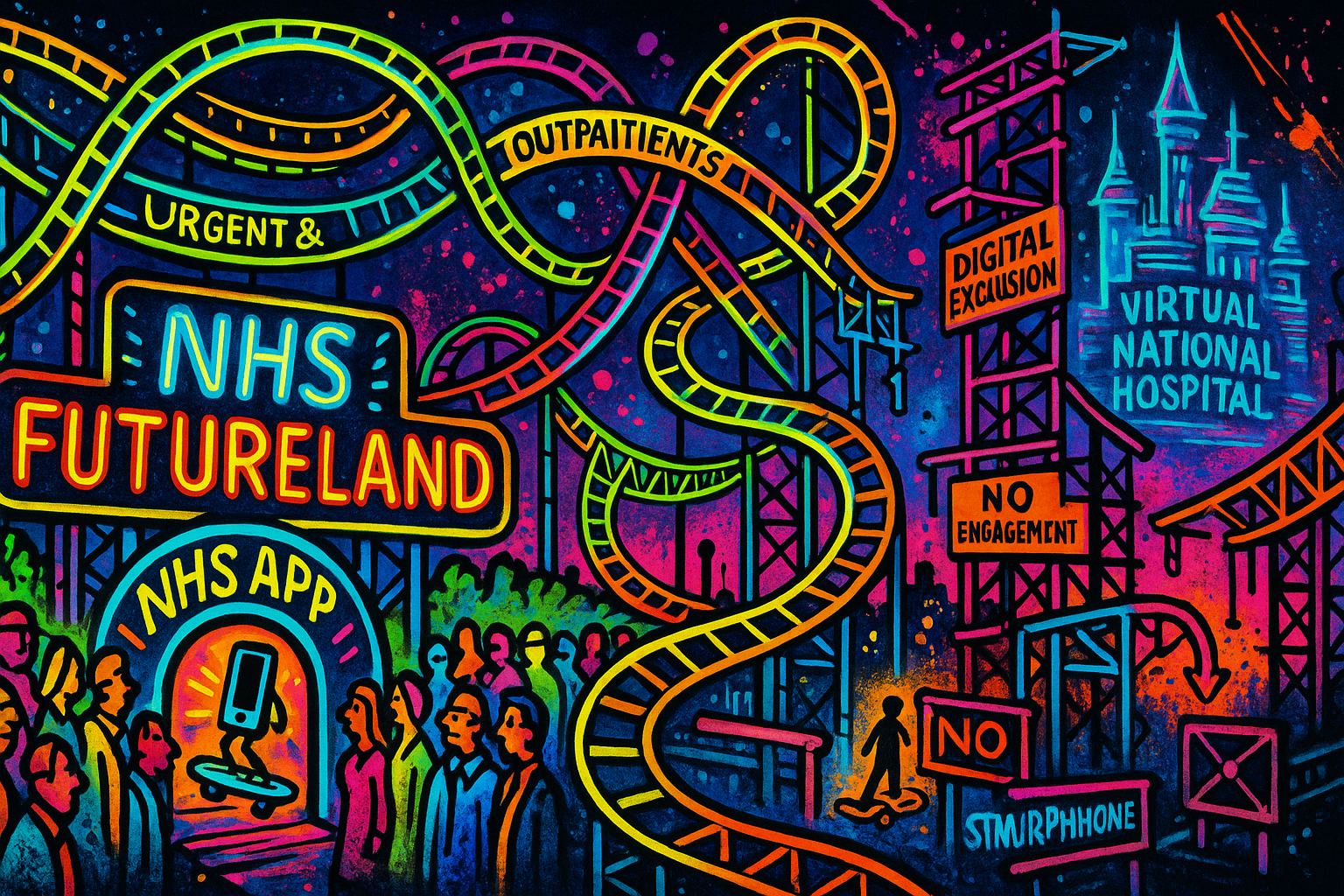Digital at the heart of transformation
The NHS 10 Year Health Plan was published in July, it set out a vision but not really a plan of how to get there. This gap has now partially been filled with the publication of the Medium Term Planning framework, a document which sets out NHS delivery commitments from now until the end of 2028/29. It describes the deliverables and reform opportunities which are to be prioritised over the next three years. The document is clear that the information is all deliberately high level to give a clear sense of the expectations leaving it to local autonomy to enable the NHS to meet the commitments set out. The first use of this local autonomy will be for ICBs and providers to create 5 year plans drawing on the framework and other recently published blueprints. Then it’s the hard work of figuring out how to make it all work while delivering services at the same time.
The Medium Term Planning framework has an ambitious amount of change over a relatively short time frame, encompassing AI, NHS App, patient communication and a new national virtual hospital. It places digital as an integral part of system transformation - as to be expected considering it’s one of the three main shifts. Technology implementation is intended to speed up transformation of urgent and emergency care, outpatients and patient empowerment. But there is a distinct focus on the technology not the people which makes or breaks successful change initiatives.
In this article I unpack the aspects of the Medium Term Planning which are relevant to technology, innovation and scale – hold on there’s a lot of acronyms ahead!
My tl;dr is that the framework puts technology at the forefront but misses the people side. It’s easy to buy technology; making the change happen means clear communication and involving people to change what they do. That is harder much and can’t be mandated as a number of meetings or announcements. So, the emphasis on local autonomy is great but it means the NHS locally discovering and sharing the best way forwards. The problem is the capability to do that is highly variable. What remains unclear is how the public will be made aware of the upcoming changes and how they can get involved. These are absolutely essential for successful implementation of innovation.
Urgent and emergency care and outpatients
Ramping up the use of digital and telephony-based triage are intended to accelerate the transformation of urgent and emergency care. Triage is expected to mean people get signposted to other services or can book same-day or next day appointments, hence reducing demand on emergency departments. This means released capacity to focus on the most unwell patients, improving flow and reducing overcrowding. In theory great...if people do what you expect which is rarely the case. So how the public are engaged and informed will be essential.
Outpatients are also identified for quicker transformation by focusing on patient empowerment and choice, enabled with technology. Patients will be able to choose whether they want outpatient contact through Patient Initiated Follow-Up (PIFU). Instead of being automatically booked for follow up appointments PIFU means patients can request a follow-up when they feel they need it ie depending upon symptoms and personal circumstances. This is expected to be made available through the NHS App, patients should have the option to choose remote consultations and digital monitoring not just in person appointments. The technology enabled outpatients transformation is going to be monitored and incentivised through the introduction of a new metric – the unnecessary outpatient follow-up (OPFU) metric. This metric won’t be a nationally set target instead providers need to use data to model OPFU and create an appropriate local target. This target should be calculated to free up capacity so the provider can use that capacity to meet other targets (ie referral to treatment and waiting times).
Outpatients and GPs are expected to increase the access to specialist input through Advice and Guidance – a digital communications channel to access clinical support, advice and clarification. The intention is that this approach helps reduce hospital appointments by enabling more support to the patient in one contact and avoiding some of the referrals. To increase the use of Advice and Guidance from July 2026 onwards a single point of access will be used combined with clinical triaging.

The Virtual National Hospital
NHS Online, the recently announced national online hospital, is included in the framework. From 2027 NHS Online will digitally connect patients to expert clinicians anywhere in England by using the NHS App. There’s still a lot of details to fill out for this and a need to move fast to meet a 2027 timetable!
Technology for staff and system operations
It’s disappointing to see relatively little technology to support staff and organisational operations. AI scribes are one example (more below) and the Federated Data Platform (FDP) another.
The FDP allows data to be connected and so analysed across multiple organisations without needing data to be centralised it all in one place. The framework places the FDP as the digital tool of choice for population health management, elective recovery, cancer and UEC. There’s a reinforced expectation that acute, community and mental health providers should implement the FDP and be using the core modules by 2028/9.
It’s good to see data quality in the guidance! The NHS is expected to use the FDP and other tools to support data quality improvements. Poor-quality data makes data informed planning and direct care more difficult. Looking further ahead data quality is essential for effective AI tools. Unfortunately this requirement is very light on details despite data becoming more essential for the NHS and patients.
The NHS App as the digital front door
We should expect an updated roadmap for the delivery of NHS App functionality to be published soon. This will include:
i) My NHS GP to give patients an AI-assisted triage tool and data-driven signposting;
ii) A single place for patients to manage appointments, referrals and interactions;
iii) Empowering people to manage their own health through access to prevention services.
There’s an expectation for full NHS App functionality to be switched on by providers by the end of 2028/29. Currently patients have a very mixed experience so this should improve the consistency of experience and reduce the fragmented NHS App functionality, where what people can see and do often depends on where they live and which organisations are involved in their care.
The Medium Term Planning framework squarely positions NHS App development as a key enabling technology, raising the big question: can the newly forming national body deliver what’s needed on time and to a good enough capability?
Patient communication and digital inclusion
The NHS spends about £100m per year on postage costs and upwards of £1.1m on text messaging. Providers are required to shift to using the NHS App for patient communications by end of 2028/9. This applies across hospitals, general practice and pharmacy. It’s unclear what this means for those who are digitally excluded or choose not to use technology, they could suffer from worse communication.
This feels like a missed opportunity to improve how and what the NHS communicates. It’s not just the means of communication that matters but what’s in the messages too. Information needs to be timely, clear, understandable and provide a way for people to respond. Ideally providers will use the shift in messaging to engage with patients to transform the language used and when communications occur not just switch the channel and carry on as before.
AI: promise and pressure
AI deployment is focused in two main areas.
Firstly, AI scribes (aka ambient voice technologies) are to be rolled out across both hospitals and general practice. AI scribes are tools that automatically generate clinical notes from consultations, aiming to reduce the time clinicians spend on documentation. These tools show promise in reducing administrative work and cognitive load while improving patient experience. However, they are positioned as a significant productivity boost, with an expectation that staff will see more patients – general practice is specifically expected to see more patients through AI scribe use. But this risks staff being overburdened and burnt out. There’s a need to monitor and adjust implementation appropriately.
Secondly, AI triage within the NHS App My GP function. It’s great if this can work but the evidence that these tools are ready for large numbers of patients and their diverse needs is unclear. If the tools are more risk-averse than existing processes, they are likely to increase workload for the system by directing more people to higher-intensity services “just in case” - creating more demand not less!
The roll-out of AI at pace needs the right support around it including clinical safety processes, information governance and workflow changes, these are variable or largely missing across the NHS. If AI triage is not monitored and managed, large errors could have unintended consequences from increasing demand to increasing harm. The roll-out of AI must have sufficient workforce capacity and skills combined with process development for effective technological adaptation. This is left to local autonomy with the risk that the financial constraints means insufficient staff to make AI a success. Instead the framework focuses on the technology overlooking the people development needed.
The framework accelerates the use of AI over the next 3 years but arguably does not do enough to create the momentum needed to realise the vision of making the NHS “the most AI-enabled health system in the world” by the end of the 10-Year Health Plan.
Measuring patient and staff experience
Trusts will be required to capture patient experience for those waiting for care and to use that data to prioritise improvements. This should both improve the data collection and help prioritise which services should be focused on for improvement.
Staff survey data should similarly be used to improve at least the three areas of highest dissatisfaction. If taken seriously, this could help ensure that the push on technology and productivity is balanced with attention to staff wellbeing and experience.

Incentivising change and reducing variation
The Modern Services Frameworks (MSFs) will set out clinically led designs of digital-first pathways. MSFs are expected to be developed first for cardiovascular disease (CVD), severe mental illness (SMI) and sepsis, then for frailty and dementia. The expectation is that the MSFs should be implemented as they are launched, which is a strong push towards standardisation and digital shift for these pathways. The problem is this continues single pathway approaches when patients increasingly have multiple conditions.
The framework also introduces a new incentive in the form of best practice tariffs as part of the 2026/27 payment scheme. Best practice tariffs are payments that reward providers for delivering care in line with agreed evidence-based standards rather than simply paying for activity. Best practice here seems to mean using technology, evidence and the data from GIRFT.
MSF and best practice tariffs together are interesting new mechanisms to shift the system towards more use of technology and increased consistency in services, which could make scaling easier in the longer term. Alongside these is the expectation that the NHS has a modern infrastructure that is embedded and adopted. That wording is slightly misleading it’s not about technical infrastructure but core digital offerings. This sets out expectations to create spread and consistency:
- NHS App capabilities must be adopted by the end of 2028/29, with full access for patients to manage medicines, view waiting times, view contact information and receive and complete questionnaires pre- and post-appointment.
- Use of the FDP and core products is expected by 2028/29.
- From 2026/27, start moving all patient communications to NHS Notify and complete this by 2028/29.
- From 2026, move to a unified access model accessible from the NHS App but with phone and in-person integration. This should use AI triage to guide the patient to self-care or an appropriate care service.
- Implement all core national products, prioritising the Electronic Prescription Service, the e-Referral Service, NHSmail (nhs.net) and all existing NHS App capabilities.
- Deploy AVT at pace and adopt the latest digital therapeutics (a particular ask for community health services, especially for musculoskeletal (MSK) services).
That last one is particularly interesting, digital therapeutics have been around for some time but is a significant change to service delivery. How are people, staff and patients, going to be informed and supported to offer and use these?
Technology, people and the risk of underuse
The technology is being put in place to empower patients and transform care and the milestones set out. But the key question remains: how are staff and patients going to be informed and supported to be able to use the technology?
Without staff engagement and support, technology will remain under-utilised and will not deliver the changes sorely needed. AI and digital therapeutics will need fundamental changes to workforce roles, responsibilities and skill mix. Digital therapeutics in particular is a radical change to care expectations for many of the population. This will need structured support and communication for them to be used effectively. Choice, empowerment and self-care all require public awareness, knowledge and capability.
Without sufficient public engagement, the technology will be deployed but is unlikely to have the transformational impact that is envisioned. The framework is solely focused on getting the digital building blocks in place. But repeats the mistake of overlooking the hard work of change - perhaps this is left to local autonomy. This means staff and leaders being capable and confident in helping people, staff and patients and carers, to be able and willing to use technology.
I hope you enjoyed this post, if so please share with others and subscribe to receive posts directly via email.
Get in touch via Bluesky or LinkedIn.
Transparency on AI use: GenAI tools have been used to help draft and edit this publication and create the images. But all content, including validation, has been by the author.

